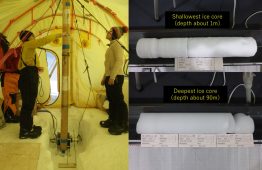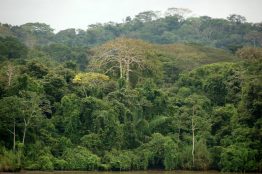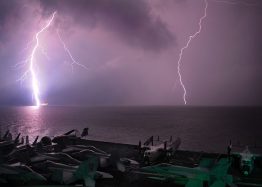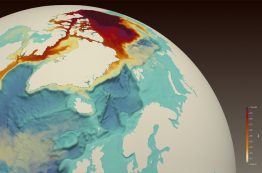The air in the United States and Western Europe is much cleaner than even a decade ago. Low-sulfur oil standards and regulations on power plants have successfully cut sulfate concentrations in the air, reducing the fine particulate matter that harms human health and cleaning up the environmental hazard of acid rain. Despite these successes, sulfate levels in the atmosphere have declined more slowly than sulfur dioxide emissions, especially in wintertime.
Read more at UW News »Thicker-leaved tropical plants may flourish under climate change, which could be good news for climate
How plants will fare as carbon dioxide levels continue to rise is a tricky problem and, researchers say, especially vexing in the tropics. Some aspects of plants’ survival may get easier, some parts will get harder, and there will be species winners and losers. The resulting shifts in vegetation will help determine the future direction of climate change. To explore the question, a study led by the University of Washington looked at how tropical forests, which absorb large amounts of carbon dioxide, might adjust as CO2 continues to climb.
Read more at UW News »Warming temperatures tripled Arctic lightning strikes over the past decade
Lightning strikes in the Arctic tripled from 2010 to 2020, a finding University of Washington researchers attribute to rising temperatures due to human-caused climate change. The results, researchers say, suggest Arctic residents in northern Russia, Canada, Europe and Alaska need to prepare for the danger of more frequent lightning strikes. The study, published March 22 in Geophysical Research Letters, used data from the UW-based World Wide Lightning Location Network to map lightning strikes across the globe from 2010 to 2020.
Read more at UW News »Ask a scientist: Nick Bond
El Niño and La Niña… we hear these two terms a lot when discussing weather but what do they really mean? We asked Washington State Climatologist and weather enthusiast Nick Bond. Keep reading for more El Niño/La Niña questions that didn’t make it into the video (but are just as interesting!). View this post on Instagram A post shared by UW College of the Environment (@uwenvironment) Q: Does El Niño or La Niña really affect our weather?
Read more »Record-high Arctic freshwater will flow through Canadian waters, affecting marine environment and Atlantic ocean currents
Freshwater is accumulating in the Arctic Ocean. The Beaufort Sea, which is the largest Arctic Ocean freshwater reservoir, has increased its freshwater content by 40% over the past two decades. How and where this water will flow into the Atlantic Ocean is important for local and global ocean conditions. A study from the University of Washington, Los Alamos National Laboratory and the National Oceanic and Atmospheric Administration shows that this freshwater travels through the Canadian Archipelago to reach the Labrador Sea, rather than through the wider marine passageways that connect to seas in Northern Europe.
Read more at UW News »





